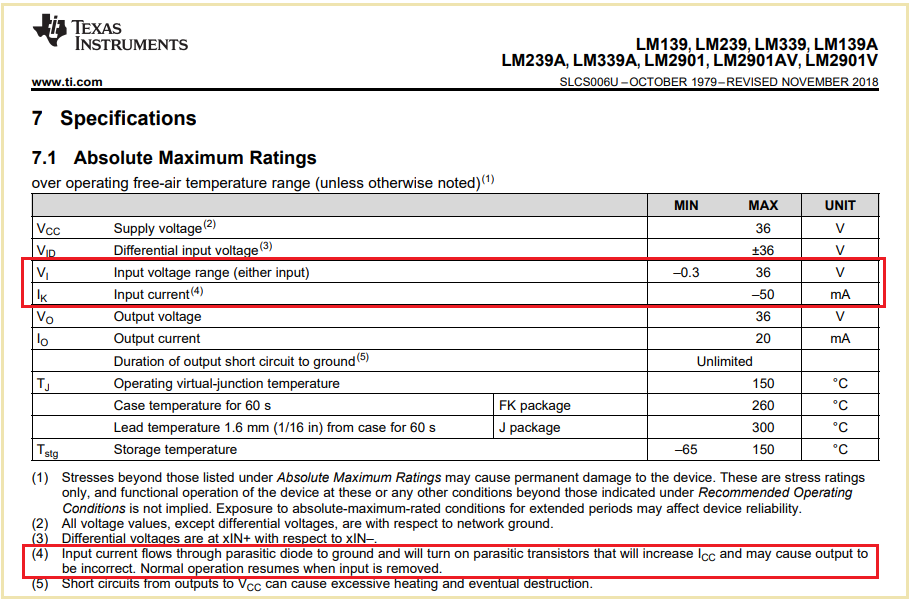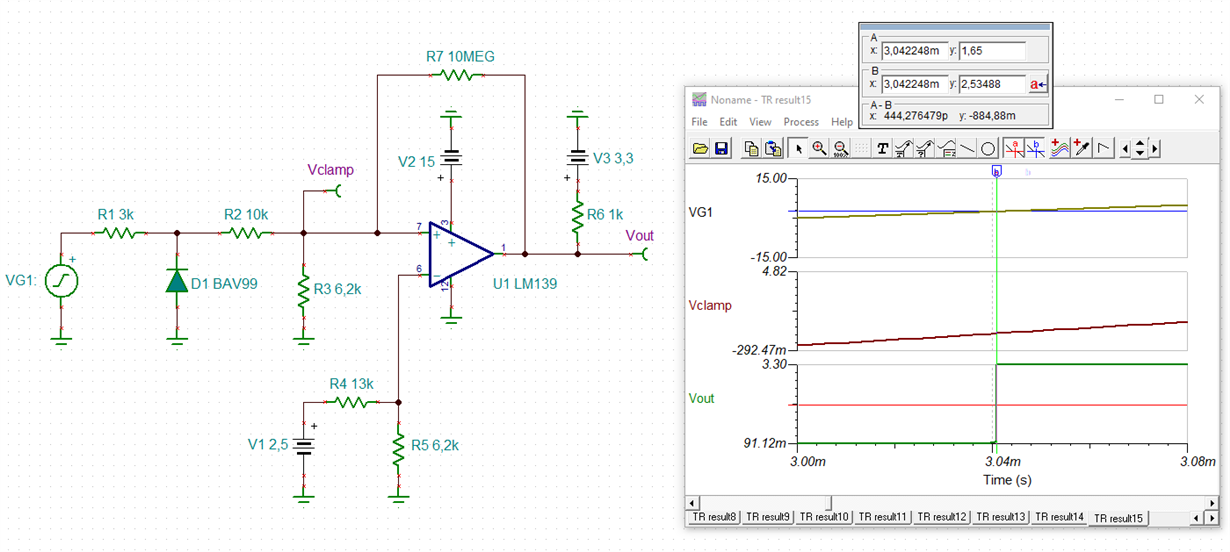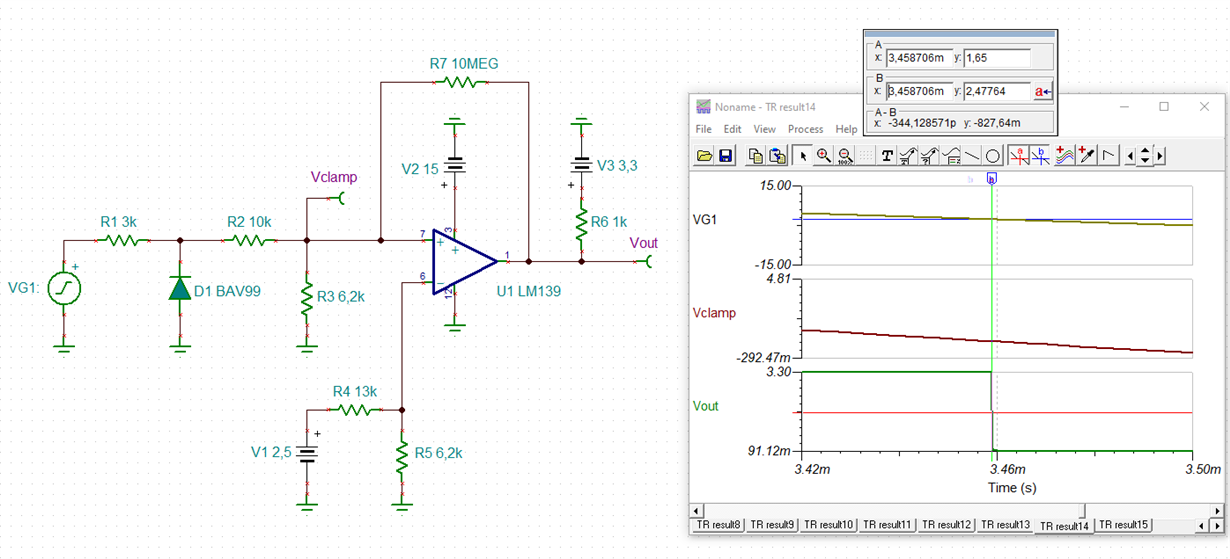Other Parts Discussed in Thread: LM139, LM139A, , LM339
Dear Sir,
my customer is considering about negative input voltage.
when negative voltage is applied to the LM139 input terminal during 200us @-1.2V as below picture.
questions.
1.If exceeding Input voltage range(-0.3V to +36V) of the device, Is there a possibility of the device(LM139A) damage?
2.What is the solution when negative Input voltage occurs?
3.When the LM139 input Lead is exposed to a continuous negative voltage environment, does stress accumulation and damage occur?





